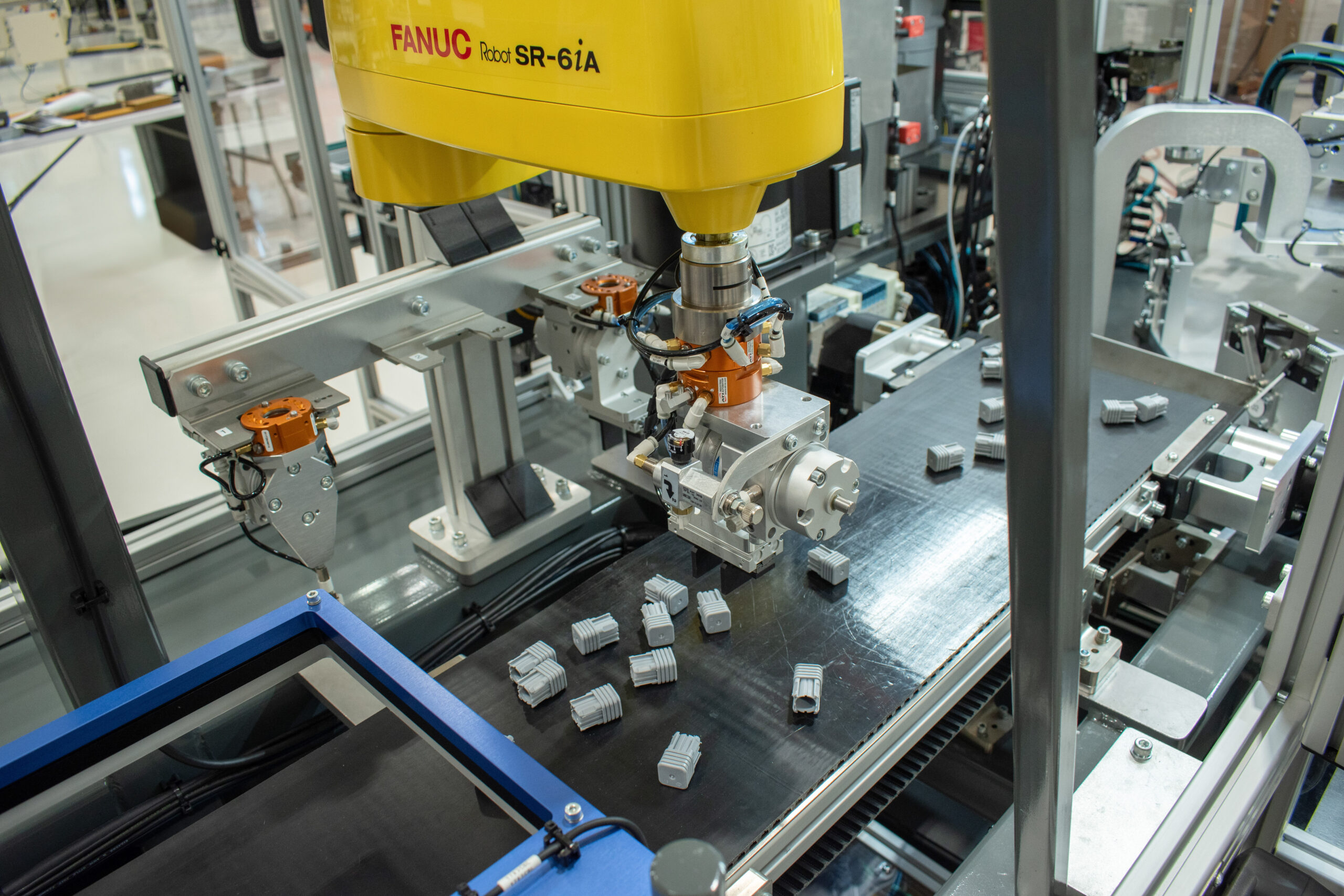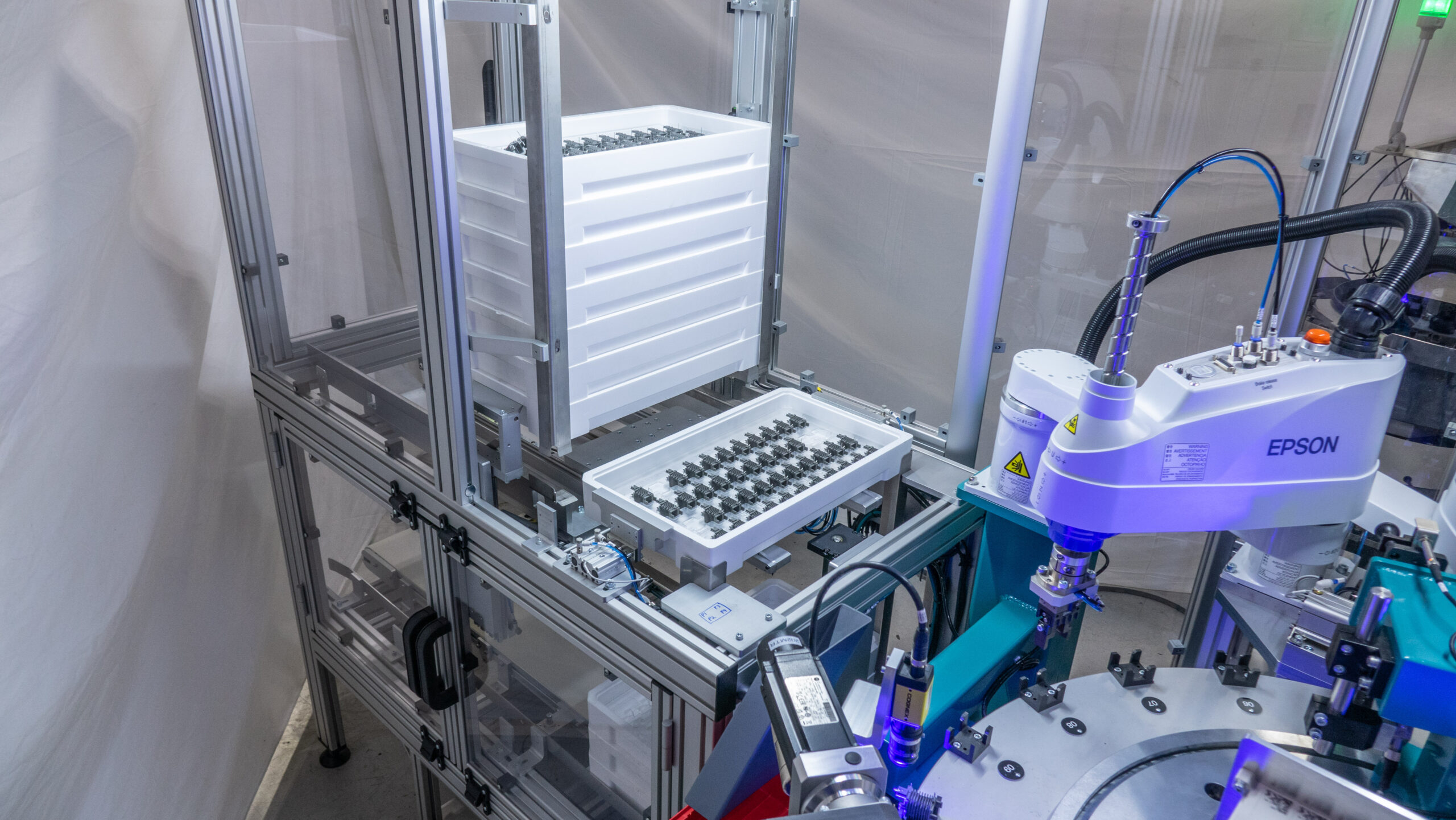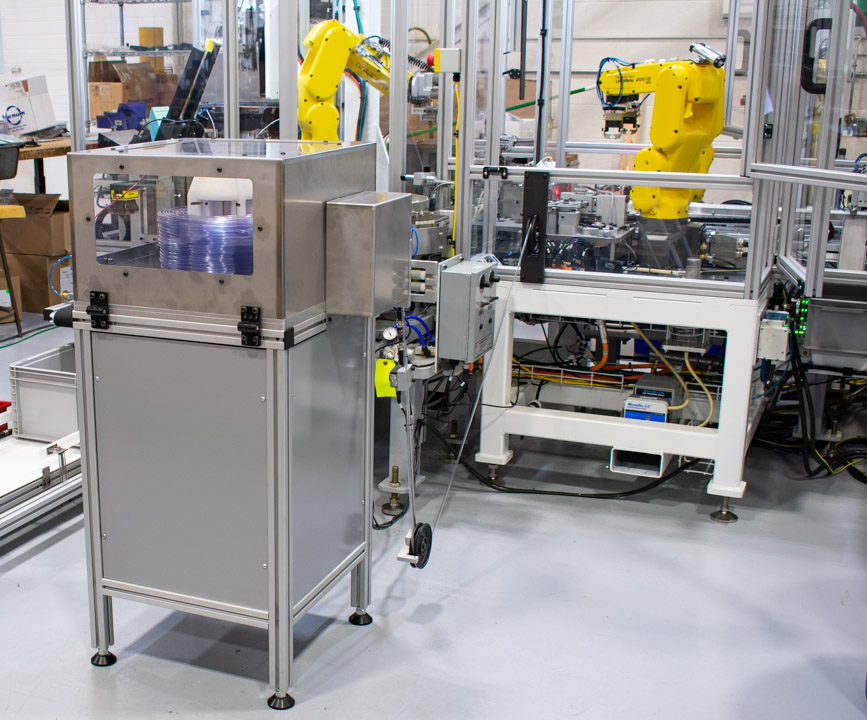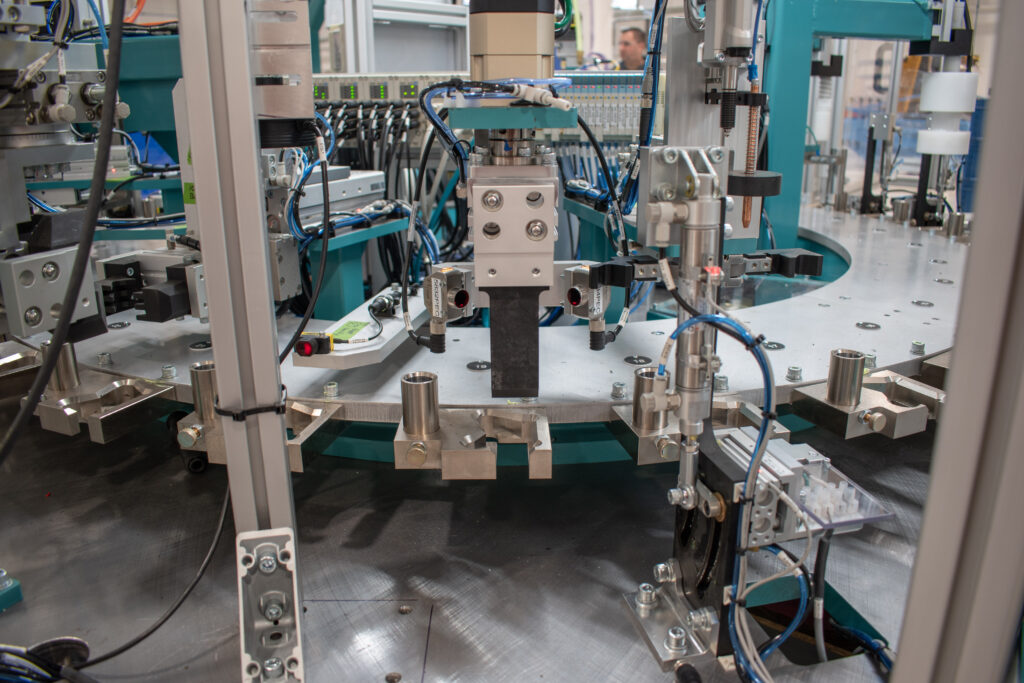The Flexibility of Parts Feeding
Have you ever wondered how automated machines are supplied with parts in the right place at the right time? It’s not magic—it’s something called a parts feeding system! These systems help move and sort parts so machines can do their jobs faster and more easily.
Not all parts are the same though—some are big, some are tiny, and some are just tricky to handle. That’s why we use different systems depending on what kind of part we need to feed. Whether it’s a vibrating bowl, a flexible robot, or even something like a tray handling system, each has its own optimal application. In this post, we’ll talk about the five most common ways we feed parts into machines and why each one is helpful. Let’s take a look at how each one works!
5 Most Common Parts Feeding Systems
There are a variety of ways to feed parts. Here’s the five most common parts feeding systems we use and why we choose each one for our automated machines:
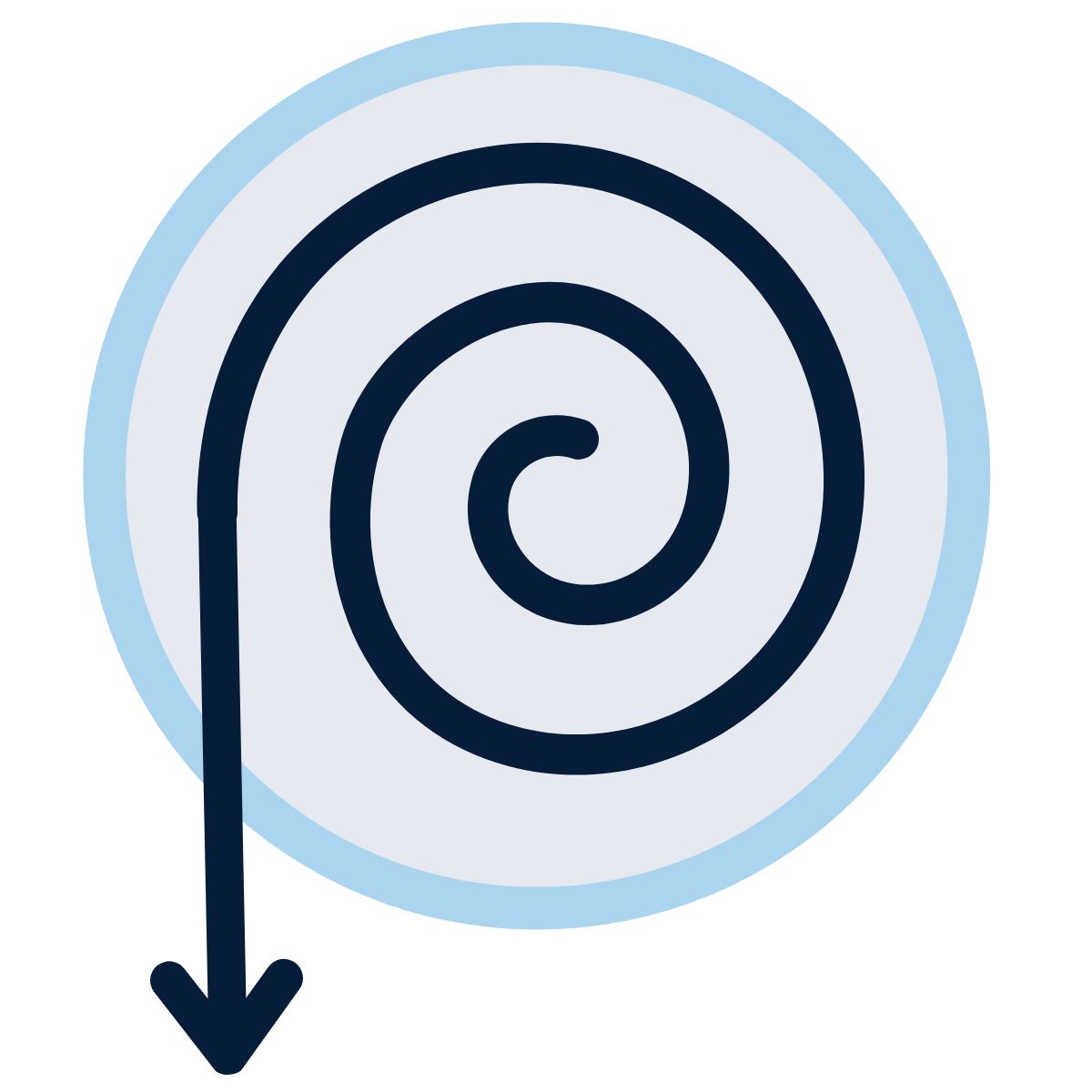 Vibratory feeder bowls
Vibratory feeder bowls
- What: Customizable bowls that move parts using vibration. Linear tracks and optional pneumatics help queue parts. Hoppers feed parts into the bowl automatically.
- Why: A reliable, standardized option for feeding large quantities of small or complex parts efficiently.
 Flex Feeding
Flex Feeding
- What: Uses a robot with vision tracking to pick parts from a moving conveyor. Parts that aren’t picked are recirculated.
- Why: Great for high-speed systems and part variety. SDC’s in-house design makes it fast to customize and integrate.
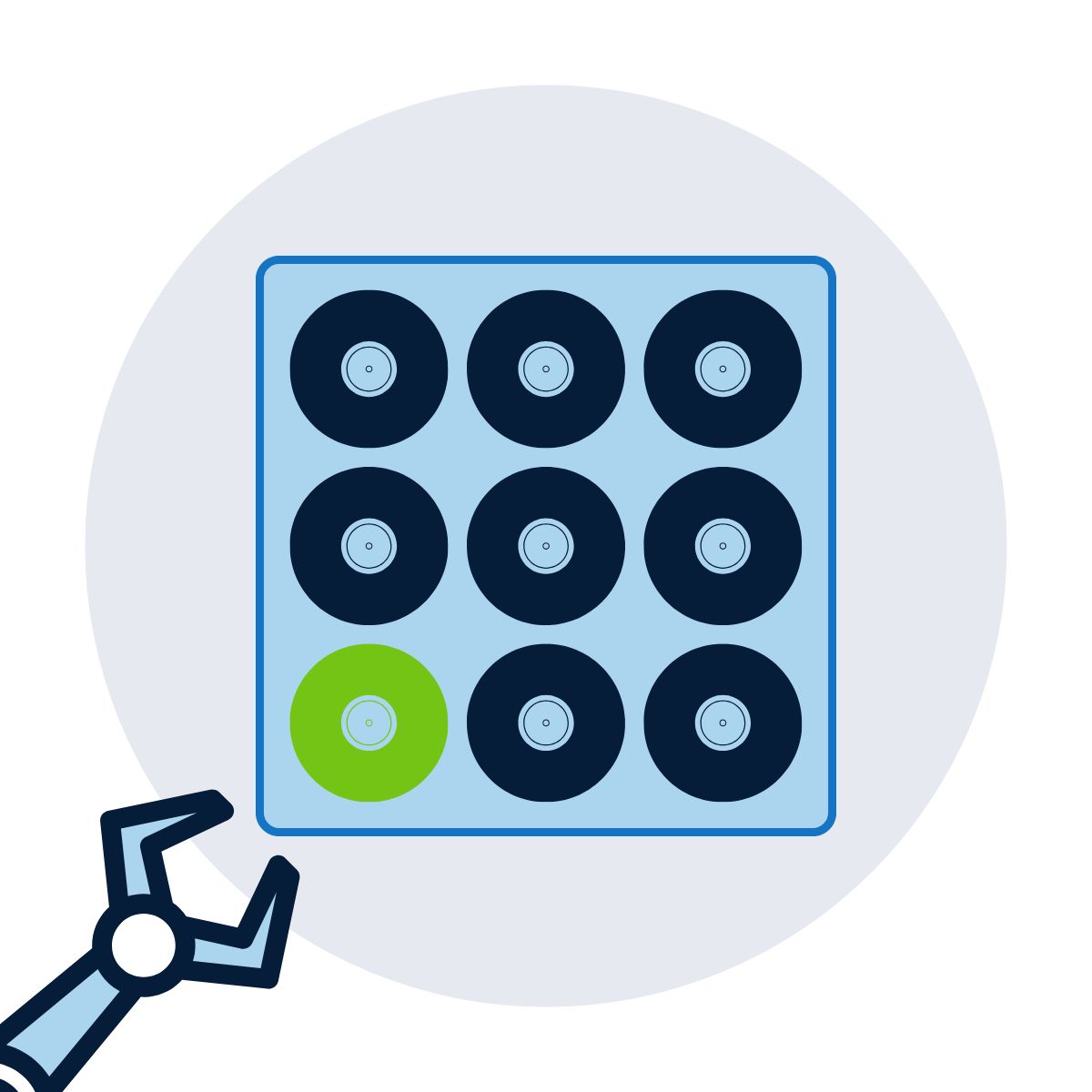 Robotic 3D bin picking
Robotic 3D bin picking
- What: Robots with overhead vision pick large, oddly shaped, or heavy parts from bins or carts.
- Why: Automates tasks that are tough to do by hand and makes feeding bulky or irregular parts much easier.
 Tray-based feeding
Tray-based feeding
- What: Trays hold parts in a neat layout. An over/under conveyor saves floor space and keeps parts organized.
- Why: Ideal for clean, high-volume handling. Easy to add to existing systems or build into a custom machine.
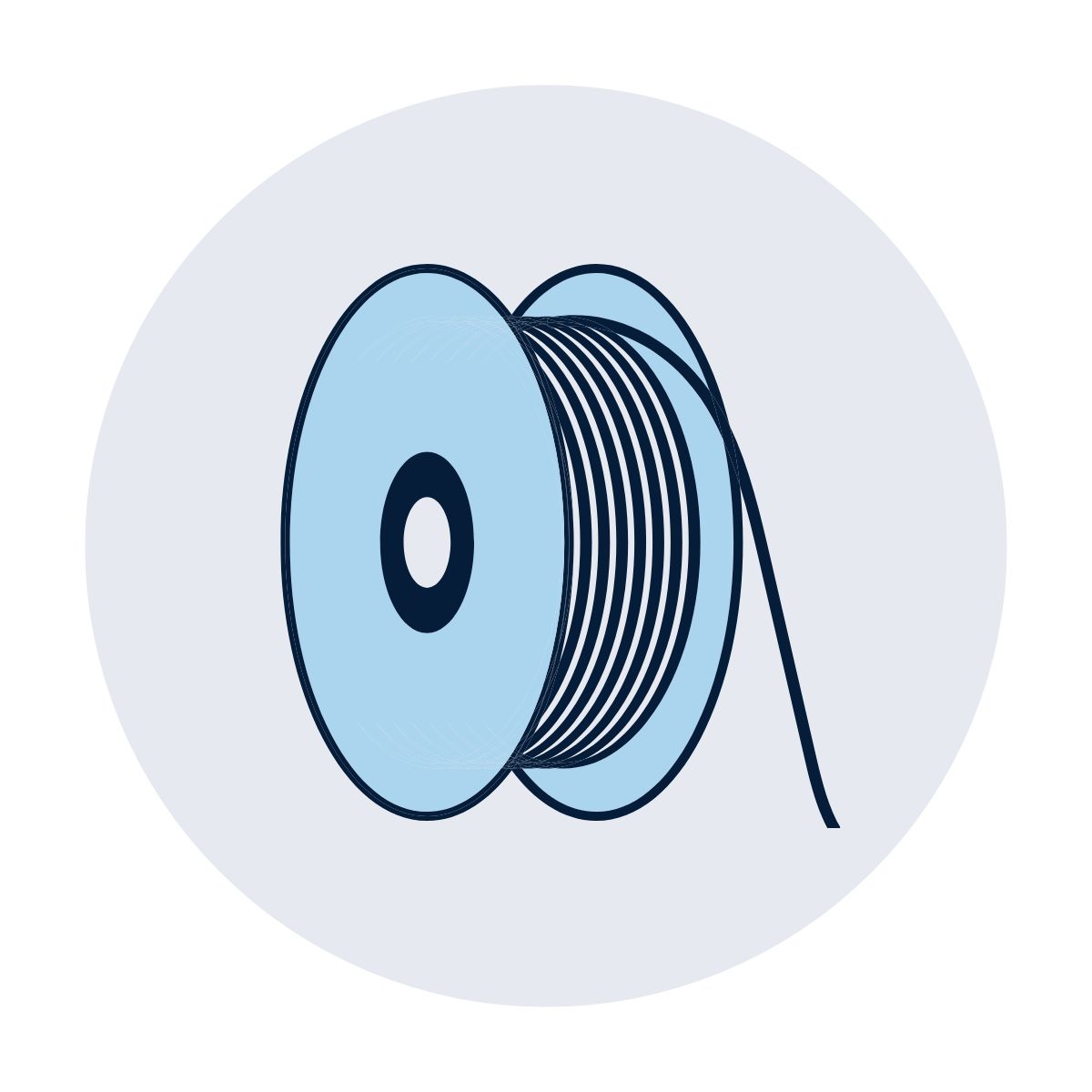 Dereeling/despooling
Dereeling/despooling
- What: Feeds parts like tubing or metal strips stored on rolls or spools.
- Why: Prevents tangling and ensures smooth feeding—especially useful for sticky medical tubing and metal parts.
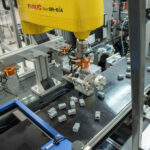
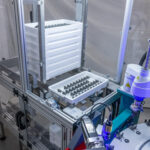
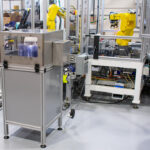
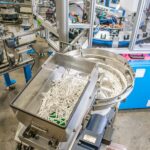
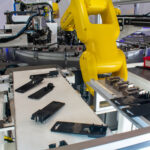

Smart Feeding Systems Power a Fully Automated Production Line
The SDC team recently took on a major challenge—designing a gas burner assembly machine that had never been automated before. To manage the complexity, the system was divided into three connected cells: two for subassembly and one for final assembly. Each cell could run independently or as part of a larger robotic automation system, working together to form a seamless, fully automated production line.
A key to making this system successful was the thoughtful integration of multiple automated parts feeding solutions. Vibratory feeder bowls delivered small components efficiently, while rotary indexing magazines handled larger parts that needed more control. A pipe loading area enabled robotic picking, and custom conveyors with specially designed pallets moved parts smoothly from one stage to the next. Manual load/unload stations were also included to give operators flexibility when needed.
This combination of flexible cell design and smart parts feeding made it possible to automate a process that had always been done by hand. It’s a perfect example of how a custom-built solution, tailored to the exact needs of the product, can bring complex manufacturing tasks into the world of modern automation.
Unique Part Factors
- Size
- Geometry
- Weight
- Material
- Orientation
- Placement
- Part variations
SDC Standard Products: Eliminating Engineering Risk with Proven Solutions

SDC Flex Feeding
Our SDC Flex Feeding systems are engineered to deliver a continuous supply of pickable parts, eliminating robotic wait times and maximizing pick rates for unmatched efficiency. Designed to keep parts moving seamlessly through your production process, our systems ensure that robots operate at peak performance with minimal downtime, significantly improving overall productivity.
These systems are constructed with carefully selected components that gently process small to medium-sized parts, regardless of shape or size. Leveraging decades of expertise, we’ve created a proven system that handles a wide variety of parts, ensuring smooth and reliable part delivery for your applications.
Key Features:
- Continuous and Uninterrupted Part Supply: The SDC Flex Feeder is designed to ensure a steady flow of pickable parts, maximizing robotic pick rates, and preventing downtime.
- Handles Complex Part Shapes Using Vision Guidance: Some parts can be difficult to pick due to factors including geometries, size, and orientation. Integrated vision systems guide the robot to accurately pick parts.
- Smart Conveyor Technology with Automated Part Re-orientation: The integrated SDC smart conveyor system strategically moves and reorients parts to optimize pickability. Automated repositioning ensures that parts are consistently presented in an ideal orientation for robotic picking, reducing errors and increasing efficiency
- Seamless Robotic Integration and High-Speed Performance: Built to work with a variety of robotic systems, the SDC Flex Feeder supports high-speed pick-and-place applications. The system’s high-speed robotics, coupled with built-in accumulation and buffering, optimizes production flow for maximum throughput.
A Custom Machine Builder vs. “Off-the-shelf” Systems
When it comes to automating a manufacturing process, one size rarely fits all. Off-the-shelf systems may seem convenient at first, but trying to adapt a generic machine to a specific application can lead to delays, extra costs, and frustration—especially without in-house automation expertise. A custom automated machine builder brings the experience, flexibility, and engineering know-how needed to design a system that works exactly the way you need it to from day one.
By partnering with a team that understands your unique product, workflow, and challenges, you’re not just buying a machine—you’re investing in a tailored solution built for long-term performance and scalability. The result is a smoother launch, higher efficiency, and less risk throughout the entire process.
5 Reasons to Work with a Custom Automated Machine Builder:
- Tailored Design – Systems are built to match your exact process, part specs, and space.
- Faster Integration – No need to retrofit or force-fit generic equipment into your line.
- Expert Engineering Support – Work with experienced teams who understand automation challenges and how to solve them.
- Scalable Solutions – Built with growth and future upgrades in mind.
- Reduced Risk & Downtime – Proven solutions and support help ensure a smoother launch and fewer surprises.
FAQ’s (Frequently Asked Questions)
Q: What is a parts feeding system, and why is it important in automation?
A: A parts feeding system moves and organizes parts so automated machines can work efficiently. It ensures parts arrive in the right place, at the right time, and in the right orientation for assembly or processing.
Q: Why are different types of feeding systems used for different parts?
A: Not all parts are the same—some are small, heavy, oddly shaped, or delicate. That’s why systems like vibratory bowls, flex feeders, 3D bin picking, tray handlers, and dereelers are used. Each is designed to handle specific part characteristics and maximize efficiency.
Q: What are the benefits of integrating multiple parts feeding systems in a single automation line?
A: Benefits include:
- Ability to handle complex assemblies with a wide variety of part types
- Increased system reliability and uptime
- Smoother, more consistent production flow
- Greater flexibility to manage challenging or irregular parts
- Improved overall efficiency in custom automated machines
Q: When should a manufacturer choose a custom automated machine instead of a generic system?
A: If your process is unique, complex, or involves non-standard parts, a custom machine is the better choice. Custom systems are designed to fit your exact needs, which reduces integration time, boosts reliability, and lowers the risk of downtime or performance issues.
Q: What makes SDC’s Flex Feeding system different from other feeding options?
A: The SDC Flex Feeding system uses smart conveyor technology and vision guidance to continuously supply robots with parts in the right orientation. It handles complex part shapes with ease and integrates seamlessly into high-speed robotic automation systems, minimizing downtime and maximizing output.
